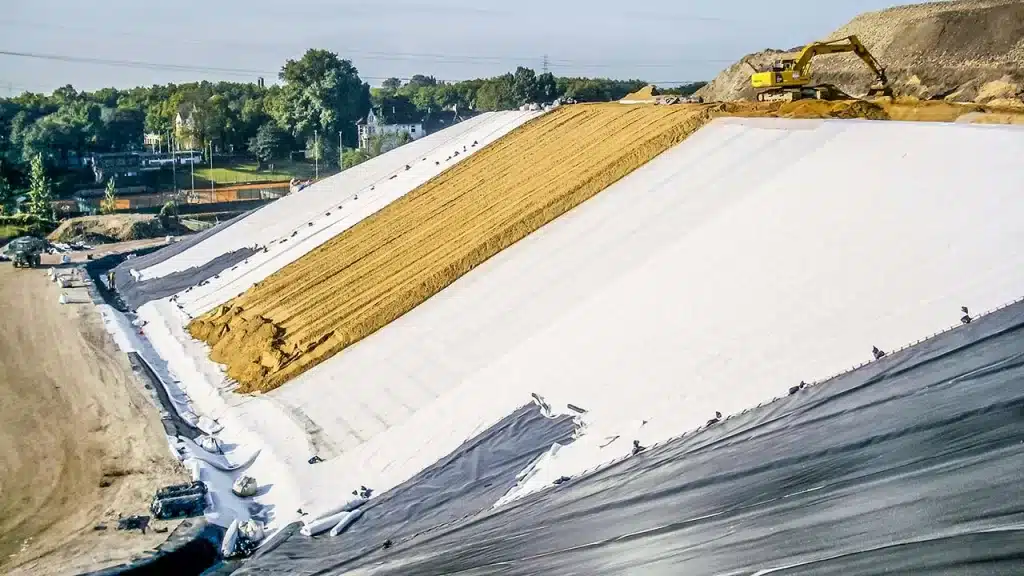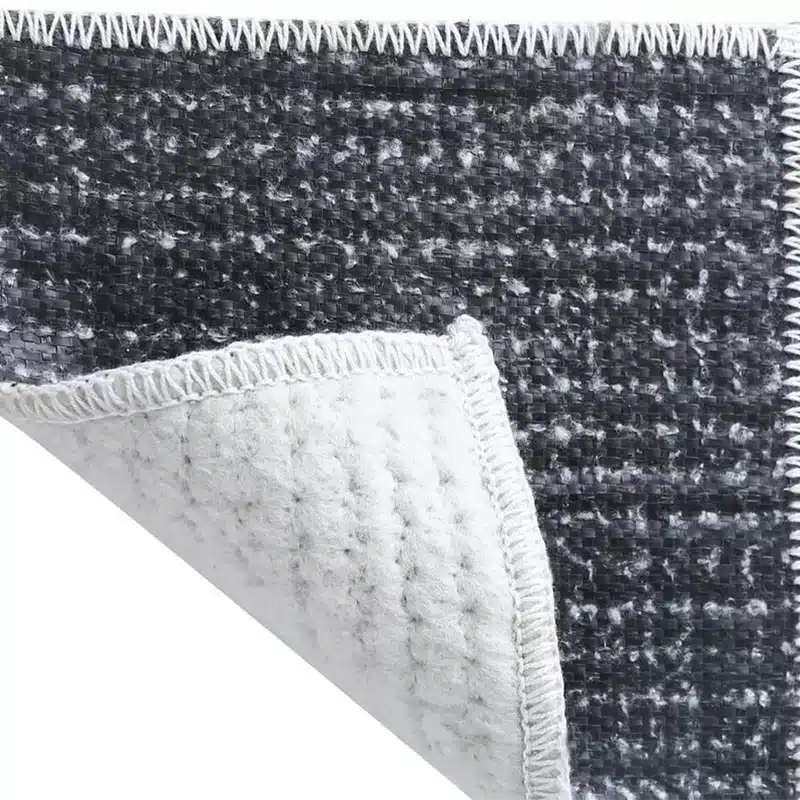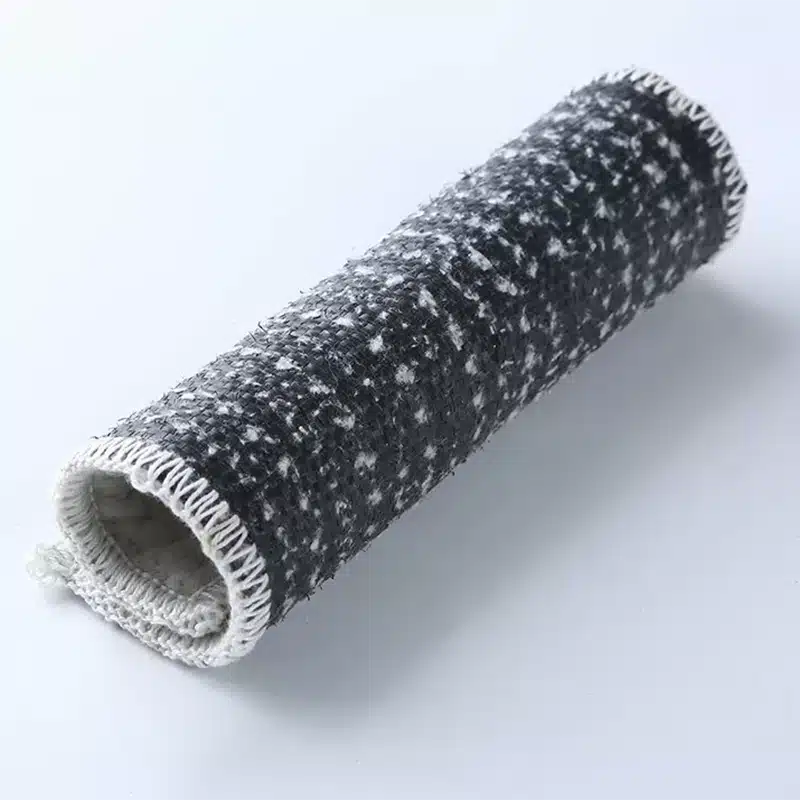+86-159 9860 6917
info@geofantex.com
geofantex@gmail.com
+86-400-8266163-44899
Geosynthetic clay liners infused with bentonite stand as unparalleled engineering marvels in modern containment solutions. Comprising layers of specialized geotextiles encapsulating a core of natural bentonite clay, these liners offer exceptional impermeability and sealing prowess. The synergy of geotextile strength and the expansive nature of bentonite clay empowers these liners to thwart seepage effectively, making them pivotal in diverse applications like landfill lining, hazardous waste containment, and hydraulic engineering projects. Embodying a perfect amalgamation of cutting-edge technology and natural elements, geosynthetic clay liners fortified with bentonite redefine the standards of reliability and performance in geotechnical engineering.

What are the geosynthetic clay liners made with?
Geosynthetic clay liners (GCLs) are composed of three primary components: a layer of natural sodium bentonite clay sandwiched between two geotextiles. The bentonite clay is a highly expansive, naturally occurring material known for its ability to swell when hydrated. This property allows it to create a self-sealing barrier when installed in containment applications, such as landfills, ponds, or reservoirs. The geotextiles provide reinforcement and support to the clay layer, enhancing its mechanical properties and preventing punctures or tears. Together, these components form a robust and effective liner system for various environmental engineering applications.
What is the difference between geomembrane and geosynthetic clay liners?
Geomembranes and geosynthetic clay liners (GCLs) are both materials used in environmental and civil engineering applications, but they have distinct differences in composition and performance.
- Geomembranes: Geomembranes are synthetic liners typically made of materials like high-density polyethylene (HDPE), polyvinyl chloride (PVC), or ethylene propylene diene monomer (EPDM). They are impermeable sheets designed to prevent the passage of liquids or gases. Geomembranes are commonly used in applications such as lining landfills, ponds, reservoirs, and mining operations to contain contaminants and prevent leakage into the surrounding environment.
- Geosynthetic Clay Liners (GCLs): Geosynthetic clay liners consist of a layer of bentonite clay sandwiched between two geotextile layers. The bentonite clay swells when hydrated, forming a dense, impermeable barrier. GCLs are often used in containment applications similar to geomembranes but offer the advantage of self-sealing properties due to the swelling of the clay. They are commonly used in landfill liners, secondary containment systems, and environmental remediation projects.
In summary, while both geomembranes and GCLs serve as barriers to fluid or gas migration, geomembranes are synthetic sheets with uniform properties, whereas GCLs incorporate natural clay for enhanced sealing capabilities.
What is GCL used for?
Geosynthetic Clay Liners (GCLs) are widely used in environmental engineering and construction projects, primarily for their excellent sealing capabilities. Here are several key applications:
- Landfill Liners: GCLs are used as barrier layers to prevent leachate, which is potentially hazardous liquid waste, from seeping into the surrounding soil and groundwater. They are typically installed beneath landfills to protect the environment.
- Containment Ponds: In projects involving wastewater treatment or chemical processing, GCLs are used to line ponds that hold contaminated water or other fluids, ensuring that these do not contaminate the local ecosystems.
- Mining Applications: GCLs are utilized in mining operations to line heaps for leaching processes and to line tailing ponds where residues from mining processes are stored.
- Waterproofing in Construction: They are also used in the construction industry for waterproofing basements, underground structures, and even in some cases, roofs, to prevent water infiltration.
- Canal Liners: GCLs serve as a cost-effective and durable solution for lining irrigation canals, aiding in water conservation by minimizing seepage.
- Remediation Projects: For sites contaminated with hazardous materials, GCLs are employed to secure and contain contaminants, facilitating site cleanup and rehabilitation.
GCLs are chosen for these applications due to their ability to offer a high level of impermeability, robust physical properties, and cost-effectiveness compared to traditional clay liners.
What are the properties of geosynthetic clay liners?
The key properties of GCLs include:
- Hydraulic Performance: Bentonite clay within GCLs possesses high swelling capacity upon hydration, forming an impermeable barrier against liquid flow.
- Self-sealing Ability: When in contact with water, the bentonite clay within GCLs expands, filling small punctures or gaps and sealing potential leakage paths.
- Chemical Resistance: GCLs exhibit resistance to various chemicals, safeguarding against the migration of contaminants.
- Durability: Geotextile layers in GCLs provide mechanical strength and stability, enhancing their long-term performance in diverse environmental conditions.
- Easy Installation: GCLs are relatively easy to install, contributing to cost-effectiveness and efficient project completion.

In conclusion, geosynthetic clay liners, powered by the unique properties of bentonite, have revolutionized the field of engineering. Their versatility, sustainability, and effectiveness in containment and hydraulic applications mark them as indispensable elements in modern construction and environmental protection initiatives. Understanding their composition, distinctions, applications, and properties underscores their pivotal role in shaping a sustainable future.



Get Free Sample
We’ll respond as soon as possible(within 12 hours)






















